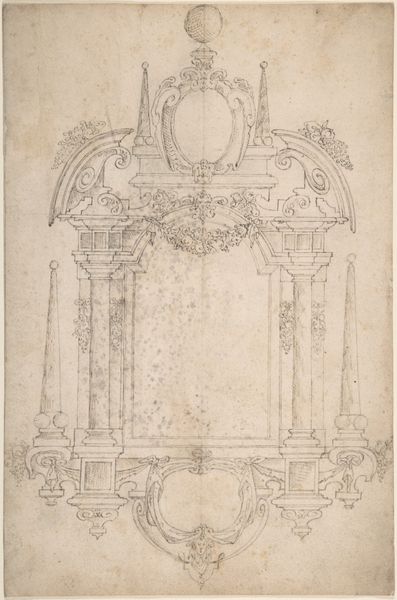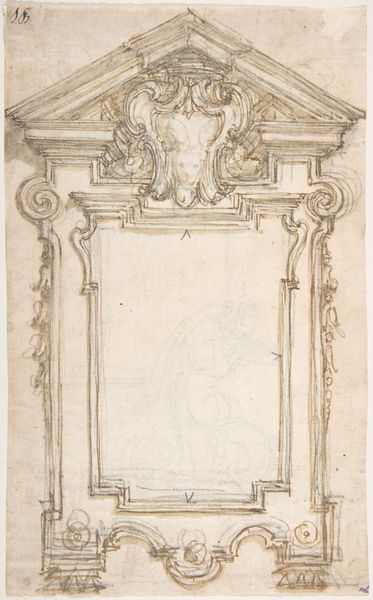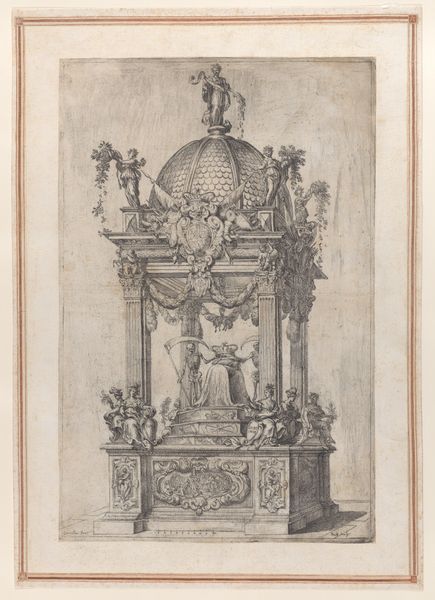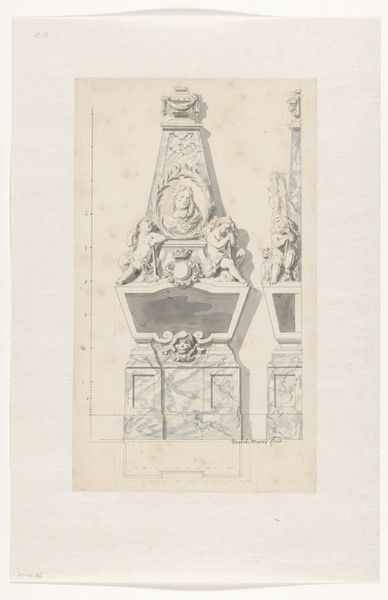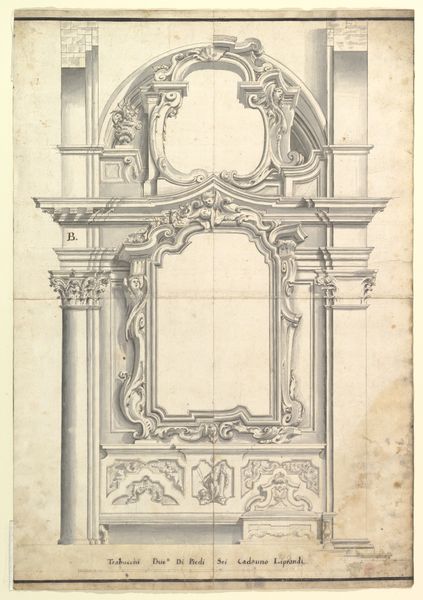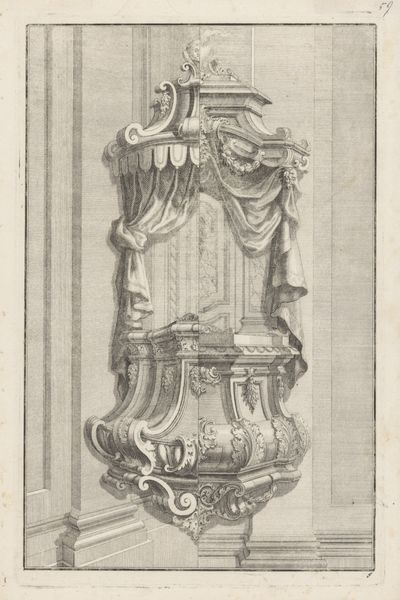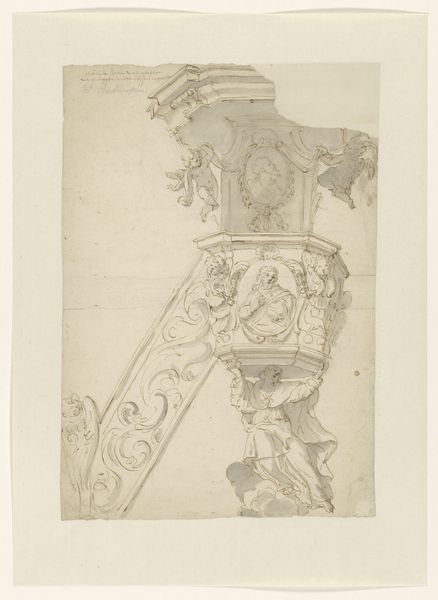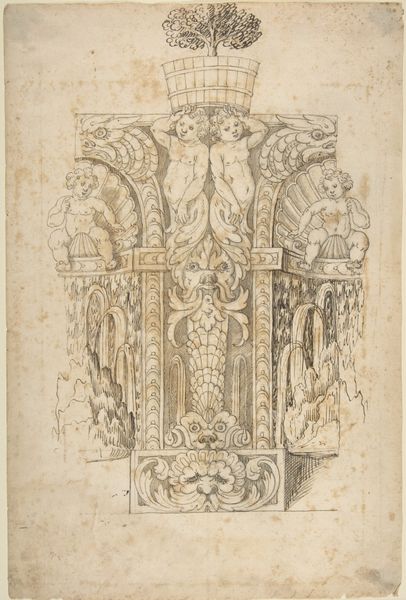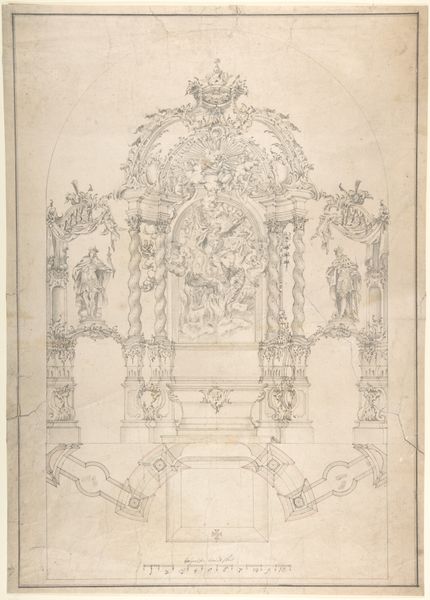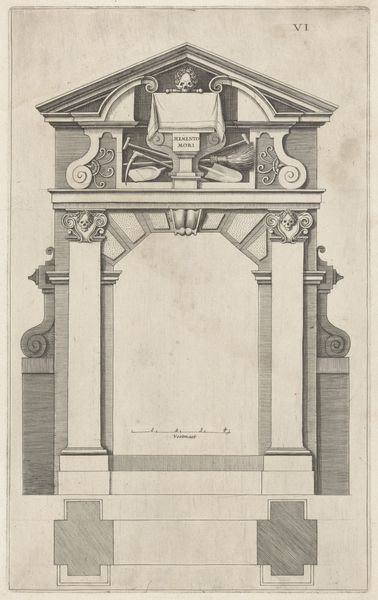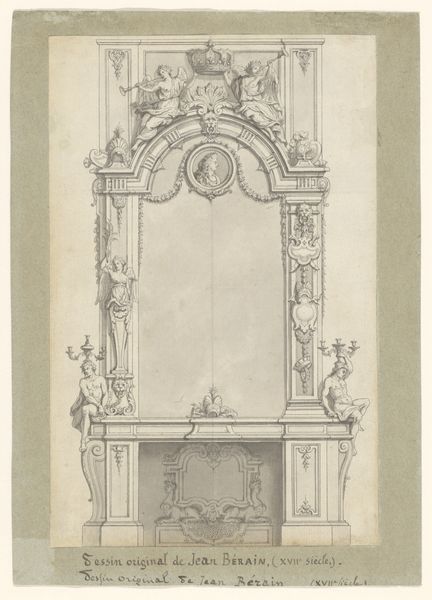
Fragmenten karton voor het glasraam in de westgevel van Joris van Egmond (Bisschop van Utrecht 1535-1559) voor de Sint Bavo Kerk te Haarlem 1541
0:00
0:00
drawing, paper, pencil, architecture
#
architectural sketch
#
drawing
#
pencil sketch
#
paper
#
11_renaissance
#
geometric
#
pencil
#
history-painting
#
architecture
Dimensions: height 12035 mm, width 580 mm, height 3710 mm, height 76 cm, width 27 cm, depth 27 cm
Copyright: Rijks Museum: Open Domain
Curator: This detailed drawing, created around 1541, offers us a glimpse into the design process behind the stained glass windows of the Sint Bavo Kerk in Haarlem. It’s titled “Fragmenten karton voor het glasraam in de westgevel van Joris van Egmond (Bisschop van Utrecht 1535-1559) voor de Sint Bavo Kerk te Haarlem,” attributed to Gerrit Boels. Editor: Wow, it has an ethereal quality to it, even in this sketched form. It feels delicate, like it could float away if you breathed on it too hard, which is a funny thought, given it was intended for stained glass. The gothic ornament, with angels, ribbons, geometric designs, and swan feels very ornate, dense and purposeful. Curator: Indeed. Stained glass design, especially for monumental spaces like cathedrals, was an incredibly meticulous process. These “cartoons,” as they were called, were full-scale preparatory drawings, blueprints essentially, for the glass artists. Editor: It’s fascinating to see this level of architectural planning made tangible and real, especially the symbolism. You see an angel climbing on a fluted doric order and two swans, with an intriguing amount of heraldic emblems as well, that are clearly trying to evoke specific values and status in relation to its location at Saint Bavo Church. There's this very serious weight being visually communicated here. Curator: Absolutely. Consider that Bishop Joris van Egmond was a significant figure, and this window was intended not just to decorate but also to commemorate and to assert the Church's authority. Editor: And in pencil and ink it does exactly that. But at the same time, I’m also struck by its humanness, its imperfection, because this preliminary step brings it alive and breaks its solemn feel. I like seeing these first steps. Curator: And that connection to the human hand is exactly why these drawings retain their power. They're not just documents; they're echoes of artistic intention. I think they tell a story that reaches beyond a specific time. Editor: Me too. I’m off to look at it up close! Thanks.
Comments
No comments
Be the first to comment and join the conversation on the ultimate creative platform.
